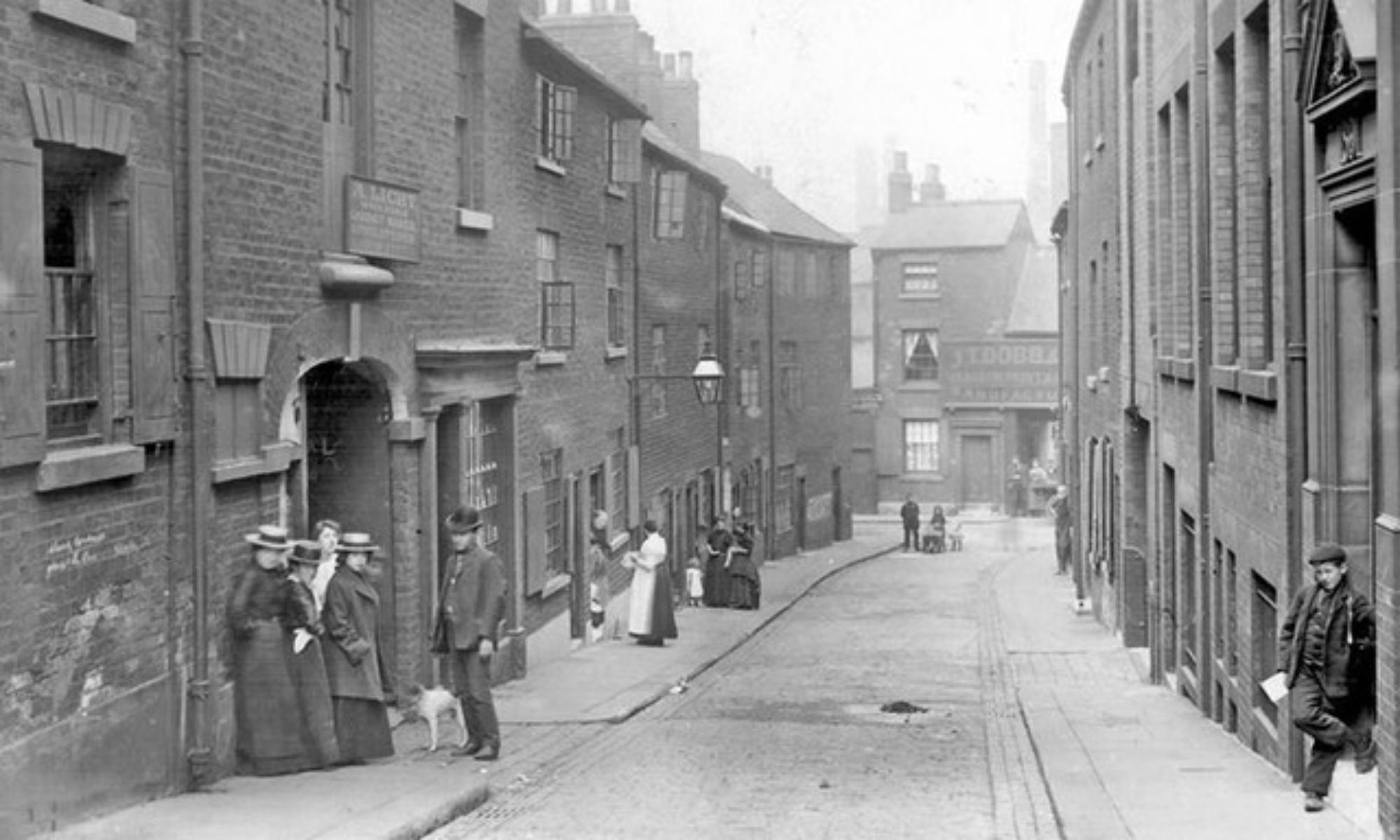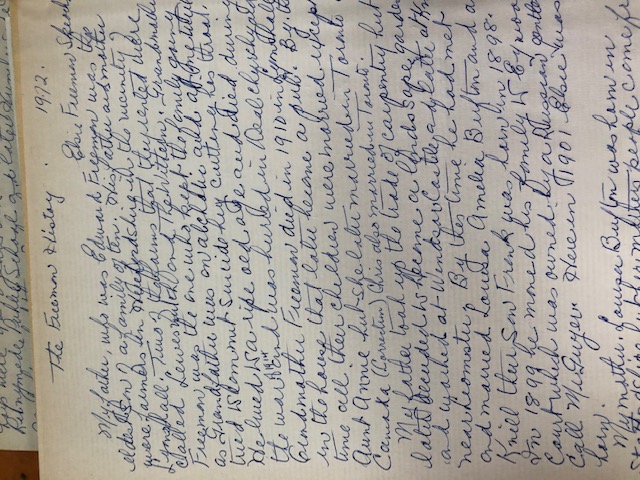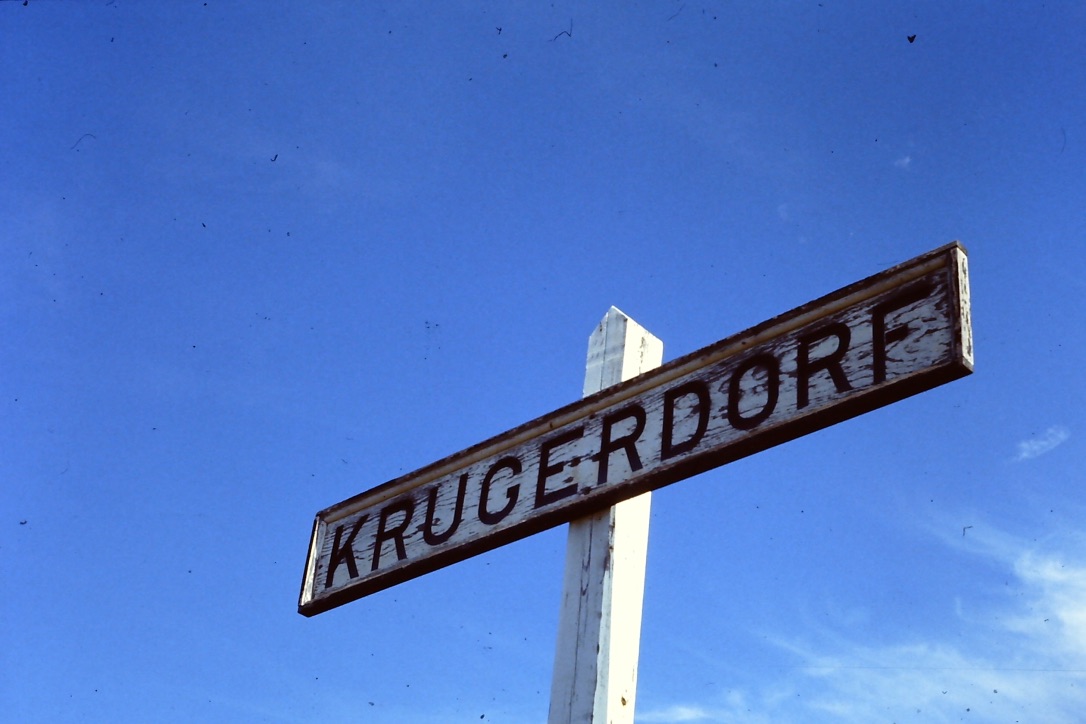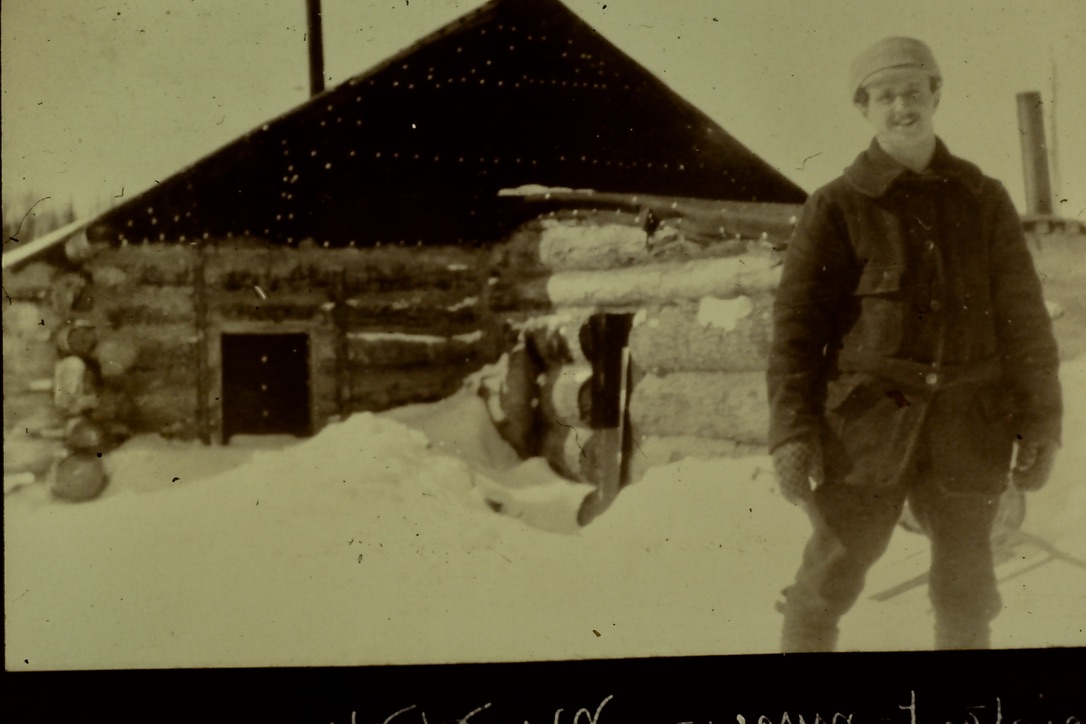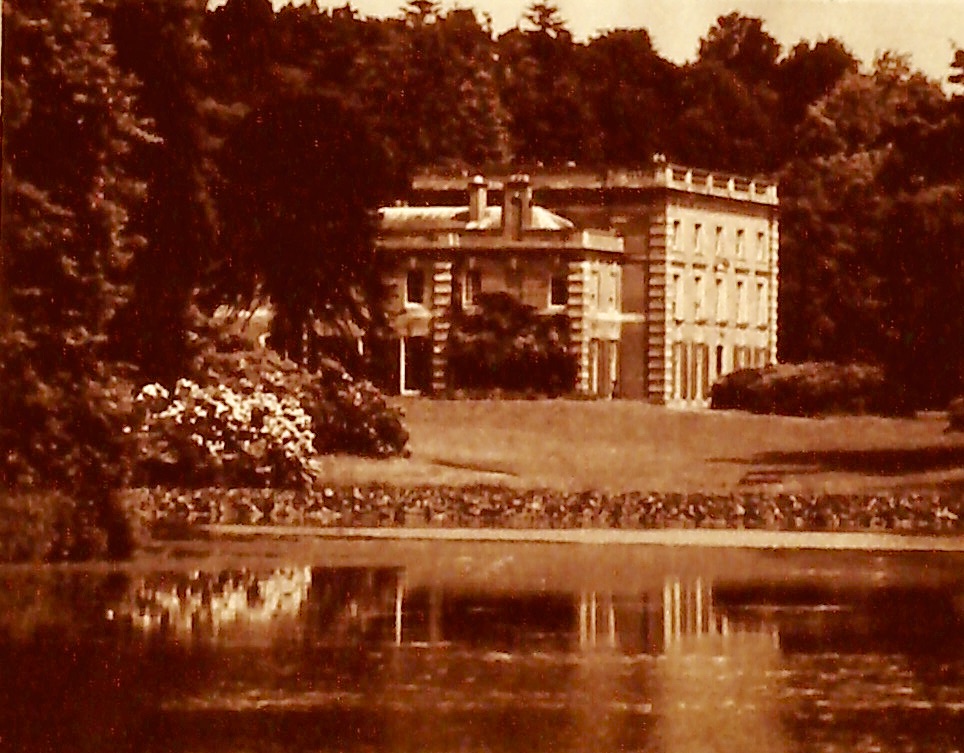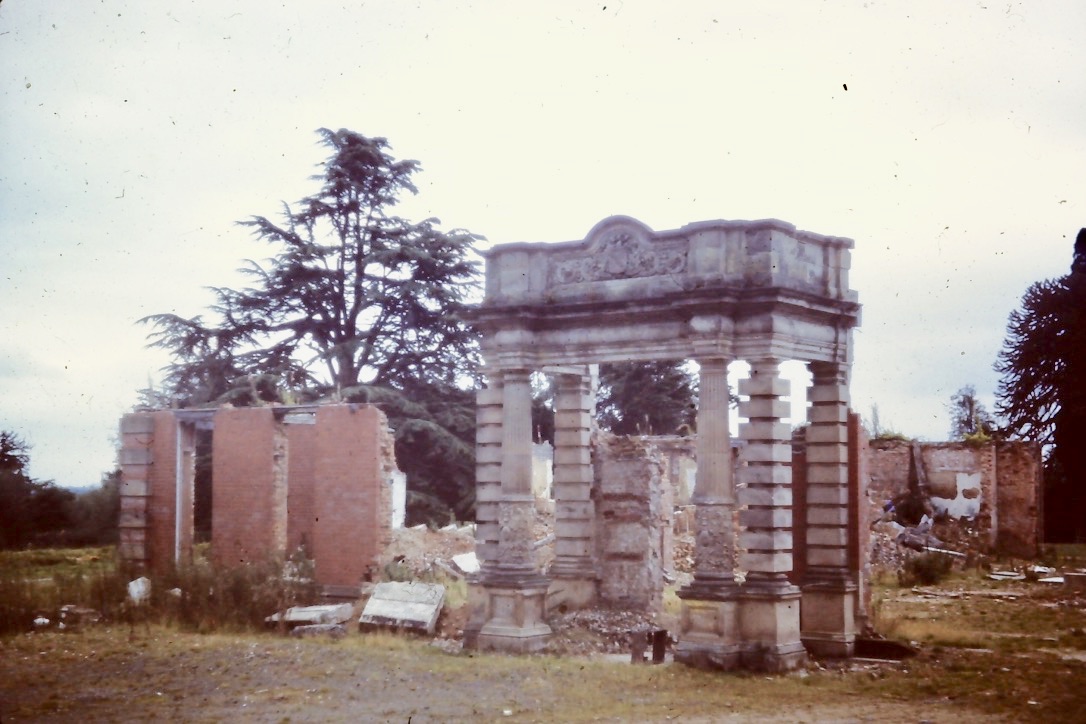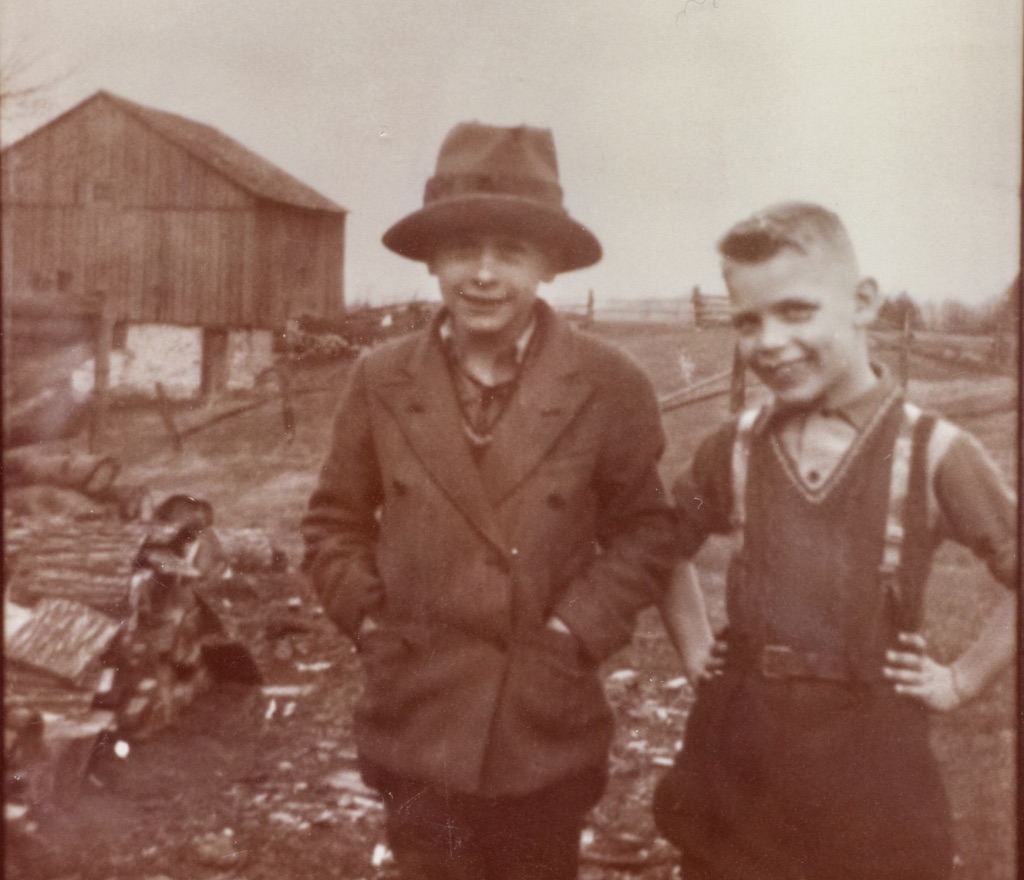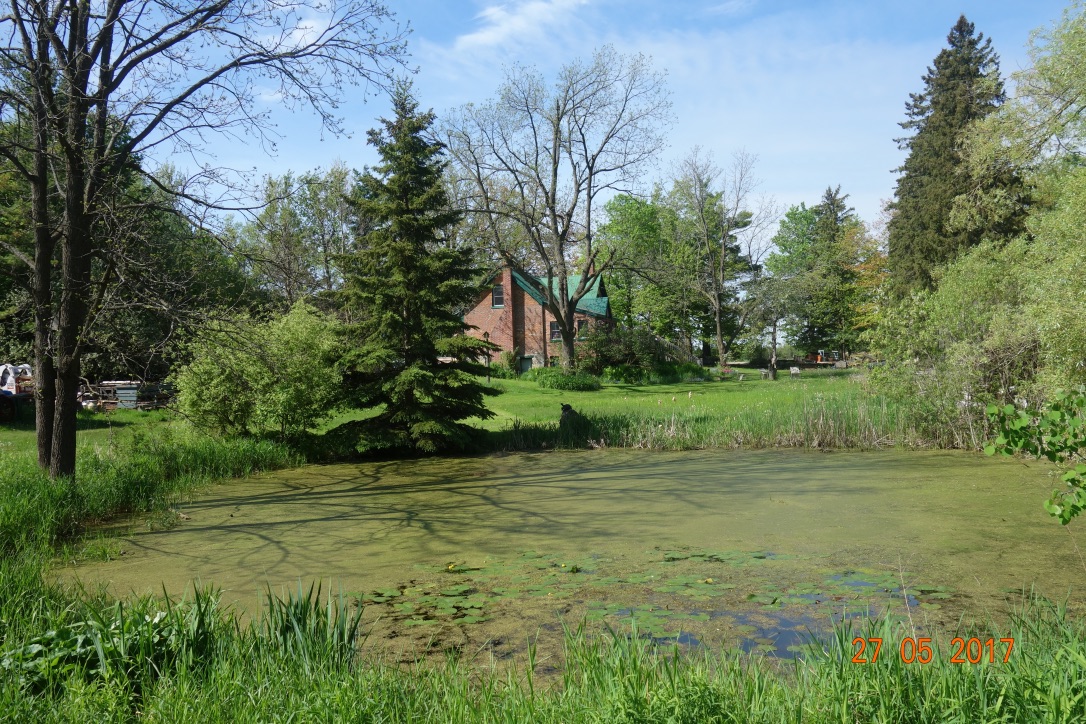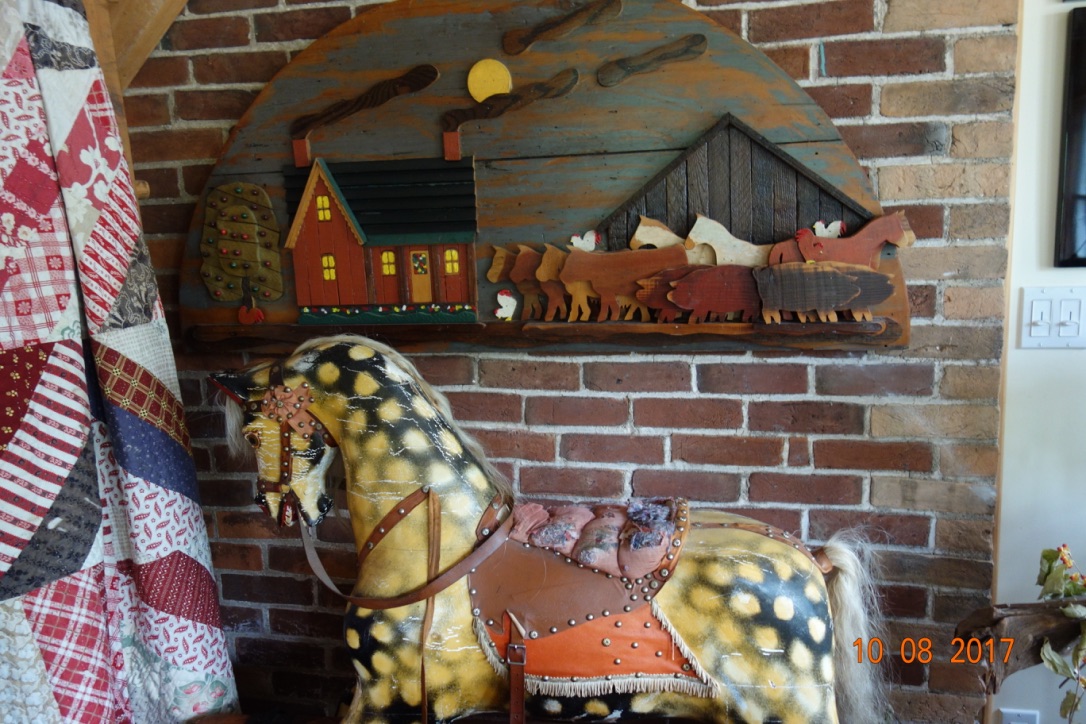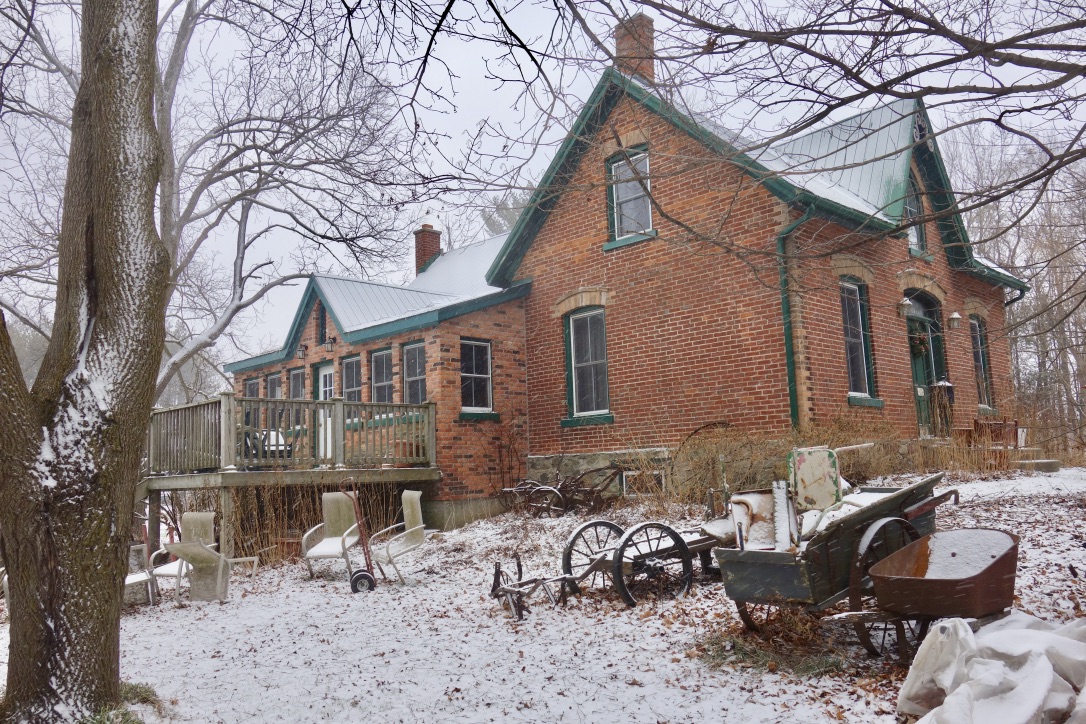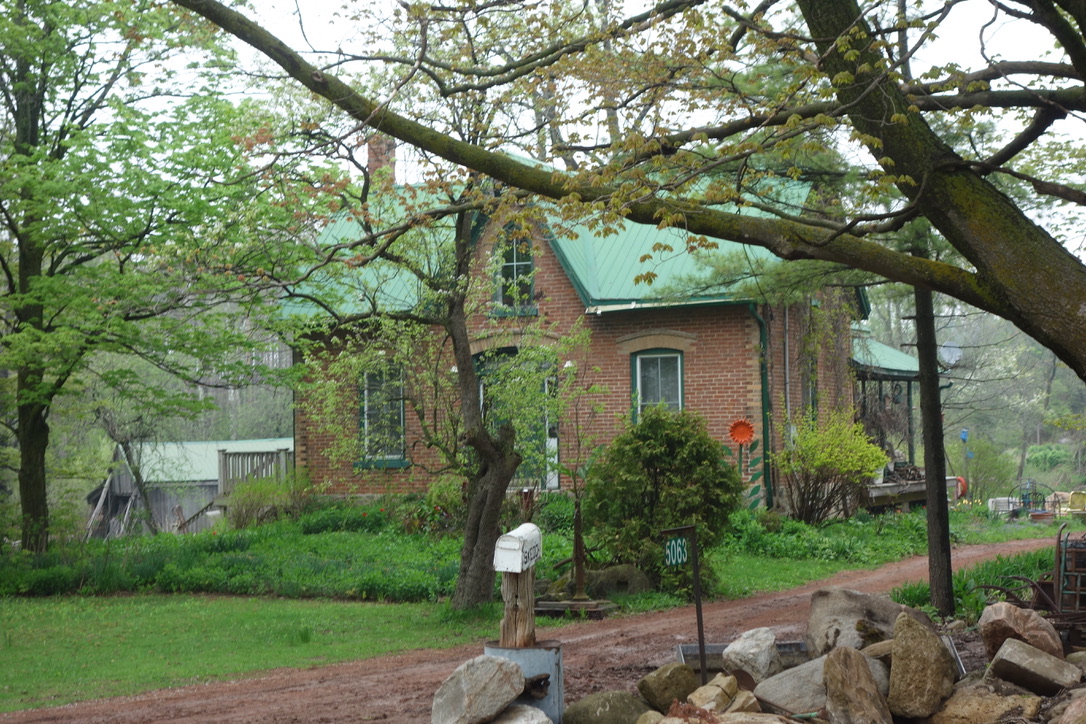Begin forwarded message:
From: ALAN SKEOCH <alan.skeoch@rogers.com>Subject: EPISODE 56 EYWOOD PARST TWO: THE IMMIGRANT YEARS OF FREEMAN FAMILY 1905 TO 1914Date: May 30, 2020 at 11:42:02 PM EDTTo: Alan Skeoch <alan.skeoch@rogers.com>
EPISODE 56 EYWOOD, PART TWOLouisa (Bufton) Freeman with daughter Elsie on her one and son Frank by her side.Photo may have been taken in the Head Gardener’s house at Eywood Estate.In 1972, I asked mom to explain life as immigrants in Canada from 1905 to 1914This is Granddad and is gardeners…ten men and boys and two horsesalan skeochMay 2020There was always something strange about the Freeman farm house. Something differentfrom other houses as I remember. And the difference, I now realize, was the picture framesand the photos fitted therein. The frames were hand carved by Granddad out of slabs ofhardwood. Then intricately carved. As below.“How long did it take you to carve these, Grandpa?”“Did one ever winter for a few years?”“Who is in the frame?”“That’s to cook from Eywood…your mother’s godmother?”“I thought you hated Eywood?”“Too strong a word, Alan.”“but you said you hated tipping your hat to Mr. Gwyer, the owner of Eywood.”“Hate is too strong a word…let’s say disliked.”“If you disliked Eywood, then why spend your winter’s doing somethingthat reminds you of Eywood.”“Alan, there is the world of difference between a system I might dislikeand the people working within the system.”“I don’t get it.”“Some of those people in service at Eywood became as close toyour grandmother and me as our family. They became family really.”Winer’s work beside the wood stove in Erin Township, Wellington County 1930’s.Elsie Freeman…hand made frame by Edward FreemanThe old Freeman farm house had reminders of Eywood on each wall of the only roomin the house that was permanently lived in. The room with the big wood stove. The restof the house in winter time was so cold that icicles formed in the rooms. Just to gotto bed upstairs we had to take a hot brick wrapped in paper. The brick was heated inthe wood stove oven.This was not the home of rich persons. Yet the walls were reminders that there wasa place somewhere in England where rich people lived and were served by servants.It was all very confusing.I thought Grandma and Grandpa came to a better place..Canada. But the reminderson the walls told a different story.Always in the back of my mind were these reminders of Eywood. A mystical placethat I thought I would never see. Time and circumstances changed things for me.Remember this point. I was born in 1938. I was a teen ager in the 1950’s. I wasan adult in the 1960’s. I was to become part of the luckiest generation of humansthis world has ever seen. I did not know it though. Nor did I know that in a few yearsI would find myself on the Eywood estate. Not once, but several times. I wouldarrive there just six years after the grand house was demolished by impoverishedBrits. I would arrive just six years after the grand estate home was blown tokingdom come.What of granddad?“Will you ever go back to Eywood ““No. We will never return…burned our bridges.”They left Eywood in 1905. Sailed to St. John, New Brunswick. Then train to Toronto.where Granddad expected his wife Louisa to stay for a few weeks while he checked out farmingin Manitoba. That was a non starter.“You expect us to take Frank and Elsie to a remote wilderness where there are no schools nearby?”“For a while that will be so.”“And no hospitals.”“Not close.”“Well…that is not going to happen…we are not going to Manitoba.”So grandpa bought a small garden farm in Etobicoke (exactly where Highway 427 sweeps northtoday and crosses Burnhamthorpe Road.). He tried to grow vegetable then haul them to Torontofor sale. Tough. Poverty was getting close.“We will sell the garden farm, Lou.”“And do what?”“I have a job as carpenter with the Temiskaming and Northern Ontario Railway. Big thingshappening in Northern Ontario. We will have a cabin in Krugerdorf…a village near Englehart.Start all over again.”Around 1985 we drove north to find krugerdorf. We found it. All that is left of therailway village is this sign. As I looked at the sign, a black bear crossed the railway tracksome distant away.This is the log cabin of Harry Horsman, a friend of the family in Krugerdorf. His cabin is primitive as wasthe cabin belonging to Ted and Lou Freeman. Theirs caught fire an burned to the ground in 1913 or 1914. Firesraged all across Northern Ontario in those years.Contrast the log cabin above with the majesty of Eywood Estate main house.The cabin turned out to be a rudimentary log cabin. In the summers massive wildfires swept acrossNorthern Ontario. Granddad had to ride through at least one such massive blaze sitting on a flat carwith forests burning on each side. It was tough. Then their own log cabin caught fire and burnedto rubble. They managed to save their one t treasure…a small pump organ. Music was a bigpart of their social life. But they were burned out. So they moved…fled… south.Grandma wanted something stable. Not flashy. For their money was limited, very limited.In 1914 Edward and Louisa Freeman bought a small farm in southern Ontario. Very small indeed.The 25 acre farm on the Fifth line of Erin Township, Wellington County, Ontario could hardlybe considered a farm. Jus to 20% of the land was swamp. And the fields were oct strewn.rocks left behind when the glacial ice retreated thousands of years ago. Rocks on the surface.Rocks below the surface. But there was a brick house. Well really a brick faced house…one brickthick. Really the house was built like a barn. Timbers rescued here and there from other buildingssome of them scorched by fire. No running water. No indoor toilet than thunder jugs beneath the beds.There was a barn. The builders must have thought the site for a barn was ideal. Between twoswamps with ager inning through the stable. No need to haul water. Of course the idea was faulty.In winter the water froze. When water freezes it expands with force enough to crack and push cementfoundations out of place. The barn would not last the century but it would last the remaining lifespansof Ted and Louisa Freeman. Room enough for a chicken coop and stabling for a few cows and a horseto two. Small. Self sufficient. Survivable.The Freemans set down roots. Roots that took some time to get established becausethe Freemans were Welsh-English. And Erin Township’s Fifth Line was overwhelmingly Scottish.There was no love lost between the English and the Scots. Tensions dating back and beyondRobert the True and William Wallace were very real in this small backwater piece of rural Ontario.Photo of the Freeman farm in the 1930’s as seen from the air.“We were not liked at first.”(Most locals could not understand why anyone would try to eke out a living on 2r acres. AnEnglish family forced by poverty to buy the small rock/swamp parcel.)“They won’t stay long..”“What is worst is that they are English. Odd they did not get better land.”“Must be a reason.”“Wait and see what happens.”Across the dirt road was the farm of Jean Macdonald, nest to her farm on south sidewere Jean and Janet McLean…south of the Freeman farm were the Macecherns, thenthe Kerrs. To the north was a great wedge of forested swamp that had once been part ofthe new Freeman farm. The land had been sold to raise enough money to build thebrick house. Once the new Freeman house had been built the former owners foundthey no longer had a farm. All of this did not bode well.Did the Freeman’s feel they had made a massive mistake leaving a reasonable comfortablelife in the Gardeners House on the Eywood Estate for the near poverty of life in Canada?They must have but I never heard a word of complaint as a boy spending many free hourswith my grandparents.“It did not take lone for us to fit in. A little tension at first.”“But everyone was poor. We made our own entertainmentusing the one room school for musical evenings.”“I played the violin along with Frank.”“Your grandmother played the pump organ and shehad a lovely singing voice.”“In not time at all, we were part of the community. Did not matter thatwe were English.”The Great War began in the same year the Freeman’s bought the farm. To payfor it, Edward Freeman took a job making eplosives in Toronto. Elsie, Frankand his wife Louisa were left to do the farming. With the money earned themortgage was soon paid in full. I am guessing when I say the farm cost $6,000perhaps less than that.From 1906 until their deaths in the 1950’s, Grandma and Granddad kept in close touchwith the resident of Eywood. No complaints. Granddad even successfully encouragedtwo of his brothers and his sister to come to Canada. They did not feel poor although theywere poor. But there was a richness of spirit in them. A great joy of living on their own land.Security of tenure.All the same it was wonderful to hear about the happenings on the Eywood Estate. The gossipof those still ‘in service’. The letters from the Griffiths were a kind of touchstone.Mercifujlly, both Grandma and Grandpa died before the terrible news reached us.The Eywood Estate was gone…the great house had sold everything right down to’the floor boards and doors and windows. All gone. And the final catastrophe wasthe demolition…with the help of explosives I was told…the final demolition of thegreat estate house.IN 1955, this wasalll that remained of Eywood mansion house.Odd fact though. The rest of the estate…the barns, the servants quarters, the dovecote,the park, the lake, the walled gardens…and the head gardeners red brick house…all of theseremain. Mom..Elsie Freeman…was born in that red brick house in 1901.NEXT STORY: PART THREE OF THE EYWOOD STORHYBACK THEN…THE 1940’S(MY BROTHER ERIC AND I DRESSED AS WE DID BACK THEN…ON THE FREEMAN FARM)TODAY…YEAR 2020So here we are in the year 2020…and the 25 acre Freeman farm has survived while thousands ofother family farms have been gobbled up into larger and larger farms with fewer and fewer farmers.The average size of a farm today is over 500 acres.We call our farm a farm but is really not a farm. Our income from the farm isminiscule. So small that we do not pay farm taxes. We pay the much largerproperty tax of non farming rural residents. No matter. The farm has survived.A wooden horse like this would likely have been present in Eywood.NEXT STORY…PART THREE OF EYWOOD. …AS FOUND IN 1960alan skeochmay 2020
EPISODE 56 EYWOOD PARST TWO: THE IMMIGRANT YEARS OF FREEMAN FAMILY 1905 TO 1914
EPISODE 56 EYWOOD, PART TWO
Louisa (Bufton) Freeman with daughter Elsie on her one and son Frank by her side.
Photo may have been taken in the Head Gardener’s house at Eywood Estate.

In 1972, I asked mom to explain life as immigrants in Canada from 1905 to 1914
This is Granddad and is gardeners…ten men and boys and two horses
alan skeoch
May 2020
There was always something strange about the Freeman farm house. Something different
from other houses as I remember. And the difference, I now realize, was the picture frames
and the photos fitted therein. The frames were hand carved by Granddad out of slabs of
hardwood. Then intricately carved. As below.
“How long did it take you to carve these, Grandpa?”
“Did one ever winter for a few years?”
“Who is in the frame?”
“That’s to cook from Eywood…your mother’s godmother?”
“I thought you hated Eywood?”
“Too strong a word, Alan.”
“but you said you hated tipping your hat to Mr. Gwyer, the owner of Eywood.”
“Hate is too strong a word…let’s say disliked.”
“If you disliked Eywood, then why spend your winter’s doing something
that reminds you of Eywood.”
“Alan, there is the world of difference between a system I might dislike
and the people working within the system.”
“I don’t get it.”
“Some of those people in service at Eywood became as close to
your grandmother and me as our family. They became family really.”

Winer’s work beside the wood stove in Erin Township, Wellington County 1930’s.

Elsie Freeman…hand made frame by Edward Freeman
The old Freeman farm house had reminders of Eywood on each wall of the only room
in the house that was permanently lived in. The room with the big wood stove. The rest
of the house in winter time was so cold that icicles formed in the rooms. Just to got
to bed upstairs we had to take a hot brick wrapped in paper. The brick was heated in
the wood stove oven.
This was not the home of rich persons. Yet the walls were reminders that there was
a place somewhere in England where rich people lived and were served by servants.
It was all very confusing.
I thought Grandma and Grandpa came to a better place..Canada. But the reminders
on the walls told a different story.
Always in the back of my mind were these reminders of Eywood. A mystical place
that I thought I would never see. Time and circumstances changed things for me.
Remember this point. I was born in 1938. I was a teen ager in the 1950’s. I was
an adult in the 1960’s. I was to become part of the luckiest generation of humans
this world has ever seen. I did not know it though. Nor did I know that in a few years
I would find myself on the Eywood estate. Not once, but several times. I would
arrive there just six years after the grand house was demolished by impoverished
Brits. I would arrive just six years after the grand estate home was blown to
kingdom come.
What of granddad?
“Will you ever go back to Eywood “
“No. We will never return…burned our bridges.”
They left Eywood in 1905. Sailed to St. John, New Brunswick. Then train to Toronto.
where Granddad expected his wife Louisa to stay for a few weeks while he checked out farming
in Manitoba. That was a non starter.
“You expect us to take Frank and Elsie to a remote wilderness where there are no schools nearby?”
“For a while that will be so.”
“And no hospitals.”
“Not close.”
“Well…that is not going to happen…we are not going to Manitoba.”
So grandpa bought a small garden farm in Etobicoke (exactly where Highway 427 sweeps north
today and crosses Burnhamthorpe Road.). He tried to grow vegetable then haul them to Toronto
for sale. Tough. Poverty was getting close.
“We will sell the garden farm, Lou.”
“And do what?”
“I have a job as carpenter with the Temiskaming and Northern Ontario Railway. Big things
happening in Northern Ontario. We will have a cabin in Krugerdorf…a village near Englehart.
Start all over again.”
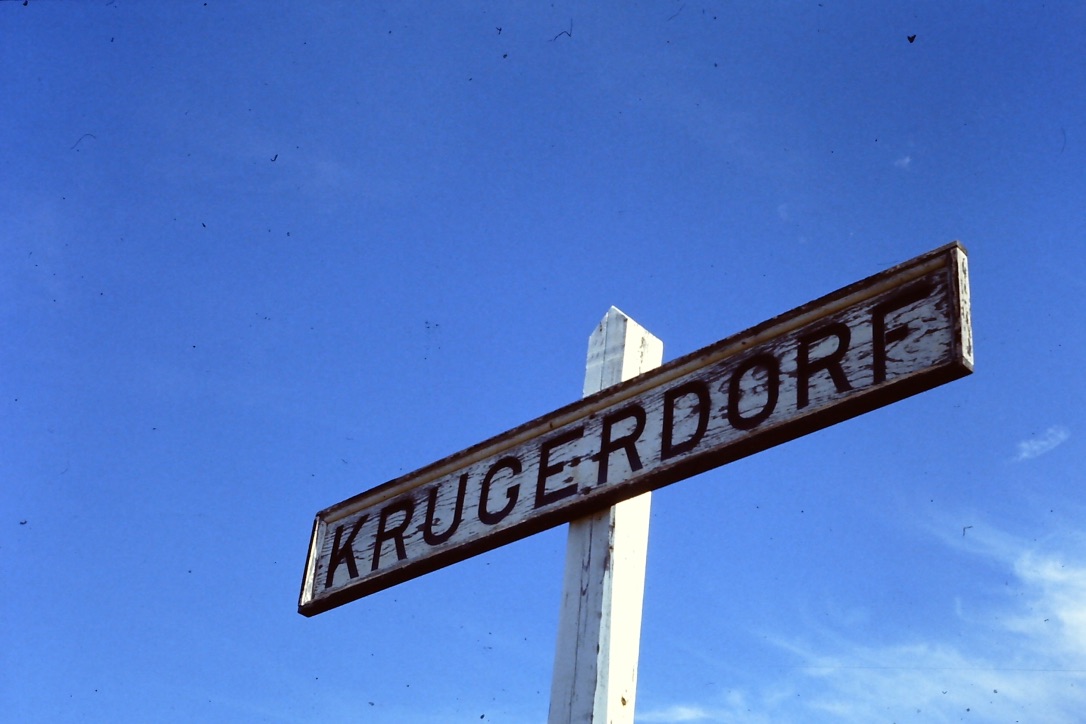
Around 1985 we drove north to find krugerdorf. We found it. All that is left of the
railway village is this sign. As I looked at the sign, a black bear crossed the railway track
some distant away.

This is the log cabin of Harry Horsman, a friend of the family in Krugerdorf. His cabin is primitive as was
the cabin belonging to Ted and Lou Freeman. Theirs caught fire an burned to the ground in 1913 or 1914. Fires
raged all across Northern Ontario in those years.

Contrast the log cabin above with the majesty of Eywood Estate main house.
The cabin turned out to be a rudimentary log cabin. In the summers massive wildfires swept across
Northern Ontario. Granddad had to ride through at least one such massive blaze sitting on a flat car
with forests burning on each side. It was tough. Then their own log cabin caught fire and burned
to rubble. They managed to save their one t treasure…a small pump organ. Music was a big
part of their social life. But they were burned out. So they moved…fled… south.
Grandma wanted something stable. Not flashy. For their money was limited, very limited.
In 1914 Edward and Louisa Freeman bought a small farm in southern Ontario. Very small indeed.
The 25 acre farm on the Fifth line of Erin Township, Wellington County, Ontario could hardly
be considered a farm. Jus to 20% of the land was swamp. And the fields were oct strewn.
rocks left behind when the glacial ice retreated thousands of years ago. Rocks on the surface.
Rocks below the surface. But there was a brick house. Well really a brick faced house…one brick
thick. Really the house was built like a barn. Timbers rescued here and there from other buildings
some of them scorched by fire. No running water. No indoor toilet than thunder jugs beneath the beds.
There was a barn. The builders must have thought the site for a barn was ideal. Between two
swamps with ager inning through the stable. No need to haul water. Of course the idea was faulty.
In winter the water froze. When water freezes it expands with force enough to crack and push cement
foundations out of place. The barn would not last the century but it would last the remaining lifespans
of Ted and Louisa Freeman. Room enough for a chicken coop and stabling for a few cows and a horse
to two. Small. Self sufficient. Survivable.
The Freemans set down roots. Roots that took some time to get established because
the Freemans were Welsh-English. And Erin Township’s Fifth Line was overwhelmingly Scottish.
There was no love lost between the English and the Scots. Tensions dating back and beyond
Robert the True and William Wallace were very real in this small backwater piece of rural Ontario.
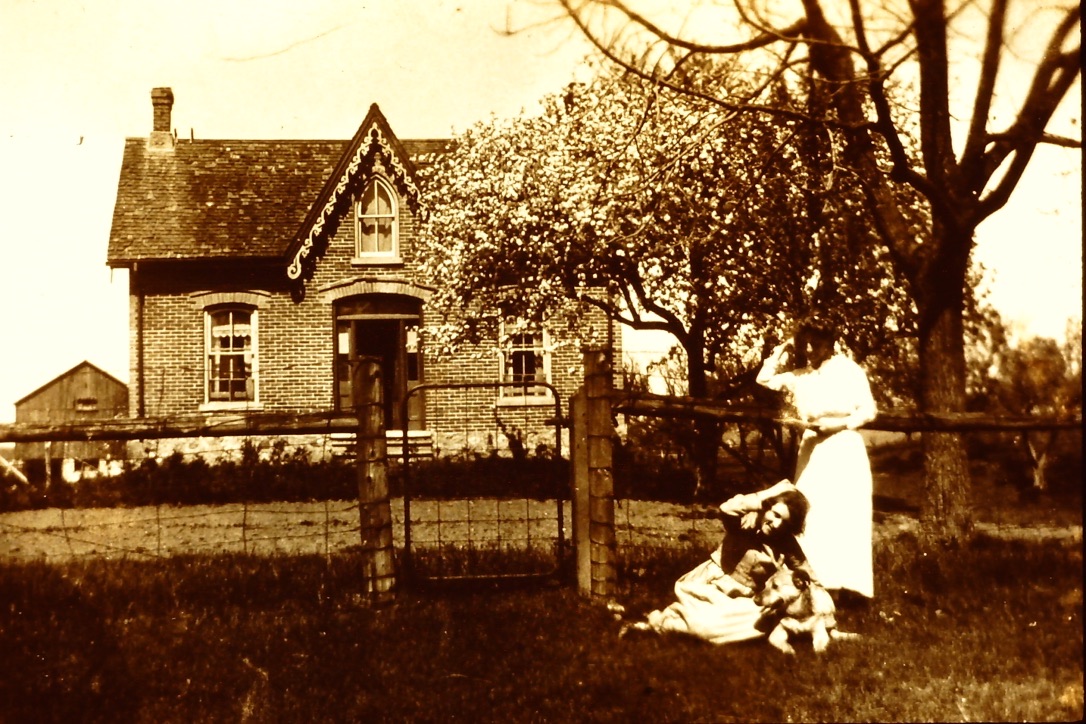
Photo of the Freeman farm in the 1930’s as seen from the air.
“We were not liked at first.”
(Most locals could not understand why anyone would try to eke out a living on 2r acres. An
English family forced by poverty to buy the small rock/swamp parcel.)
“They won’t stay long..”
“What is worst is that they are English. Odd they did not get better land.”
“Must be a reason.”
“Wait and see what happens.”
Across the dirt road was the farm of Jean Macdonald, nest to her farm on south side
were Jean and Janet McLean…south of the Freeman farm were the Macecherns, then
the Kerrs. To the north was a great wedge of forested swamp that had once been part of
the new Freeman farm. The land had been sold to raise enough money to build the
brick house. Once the new Freeman house had been built the former owners found
they no longer had a farm. All of this did not bode well.
Did the Freeman’s feel they had made a massive mistake leaving a reasonable comfortable
life in the Gardeners House on the Eywood Estate for the near poverty of life in Canada?
They must have but I never heard a word of complaint as a boy spending many free hours
with my grandparents.
“It did not take lone for us to fit in. A little tension at first.”
“But everyone was poor. We made our own entertainment
using the one room school for musical evenings.”
“I played the violin along with Frank.”
“Your grandmother played the pump organ and she
had a lovely singing voice.”
“In not time at all, we were part of the community. Did not matter that
we were English.”
The Great War began in the same year the Freeman’s bought the farm. To pay
for it, Edward Freeman took a job making eplosives in Toronto. Elsie, Frank
and his wife Louisa were left to do the farming. With the money earned the
mortgage was soon paid in full. I am guessing when I say the farm cost $6,000
perhaps less than that.
From 1906 until their deaths in the 1950’s, Grandma and Granddad kept in close touch
with the resident of Eywood. No complaints. Granddad even successfully encouraged
two of his brothers and his sister to come to Canada. They did not feel poor although they
were poor. But there was a richness of spirit in them. A great joy of living on their own land.
Security of tenure.
All the same it was wonderful to hear about the happenings on the Eywood Estate. The gossip
of those still ‘in service’. The letters from the Griffiths were a kind of touchstone.
Mercifujlly, both Grandma and Grandpa died before the terrible news reached us.
The Eywood Estate was gone…the great house had sold everything right down to’
the floor boards and doors and windows. All gone. And the final catastrophe was
the demolition…with the help of explosives I was told…the final demolition of the
great estate house.
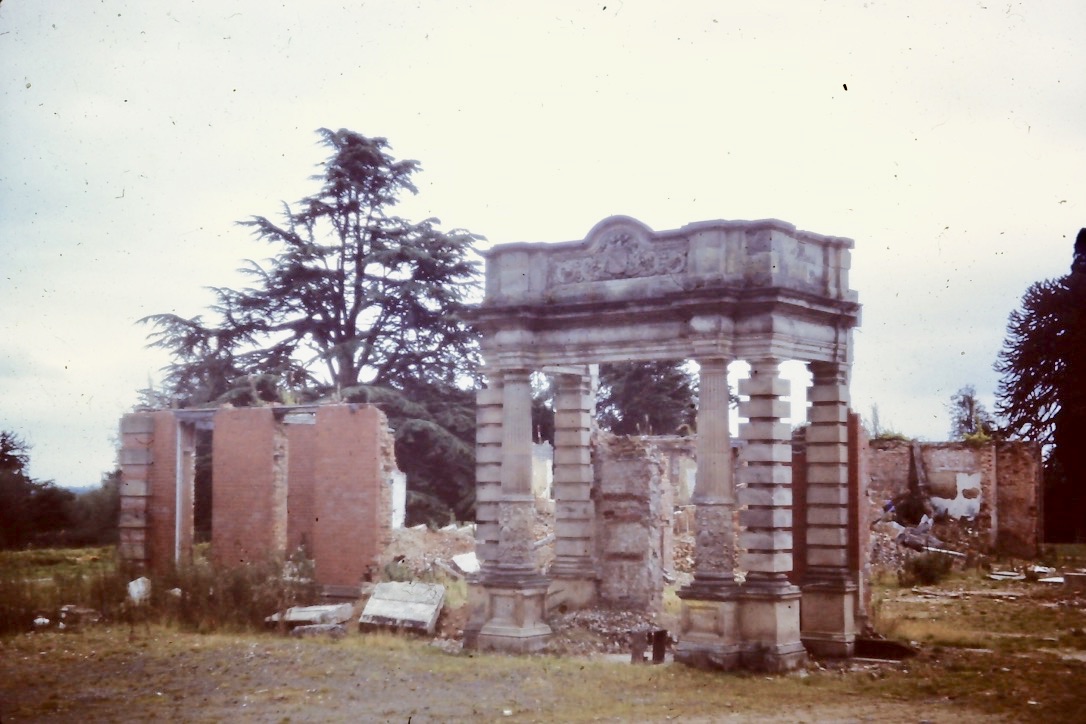
IN 1955, this wasalll that remained of Eywood mansion house.
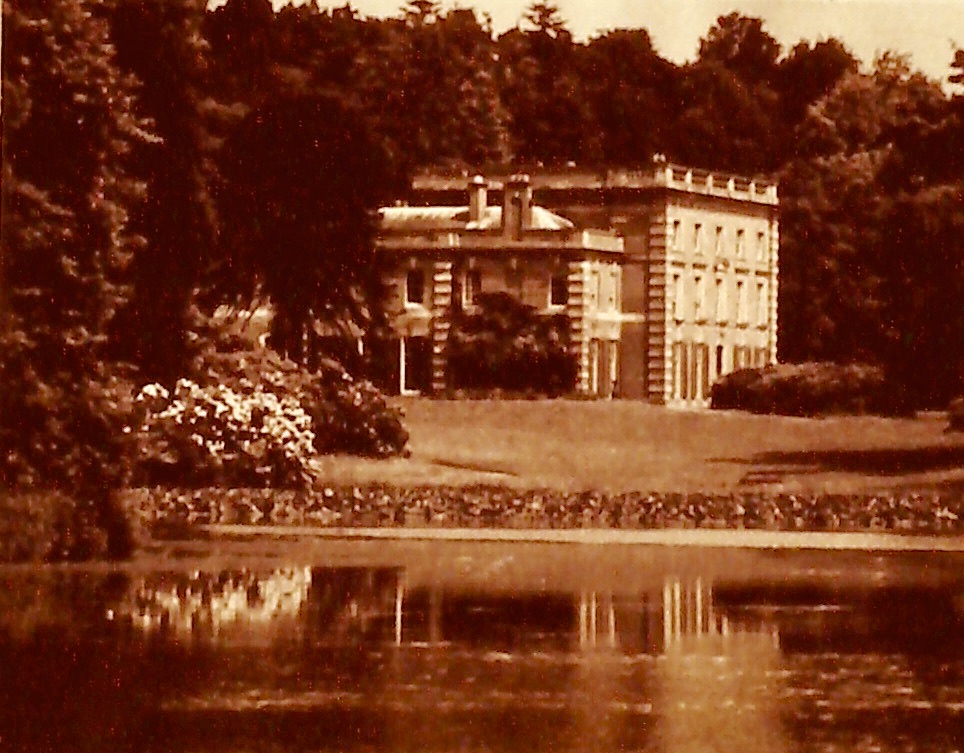
Odd fact though. The rest of the estate…the barns, the servants quarters, the dovecote,
the park, the lake, the walled gardens…and the head gardeners red brick house…all of these
remain. Mom..Elsie Freeman…was born in that red brick house in 1901.
NEXT STORY: PART THREE OF THE EYWOOD STORHY
BACK THEN…THE 1940’S
(MY BROTHER ERIC AND I DRESSED AS WE DID BACK THEN…ON THE FREEMAN FARM)
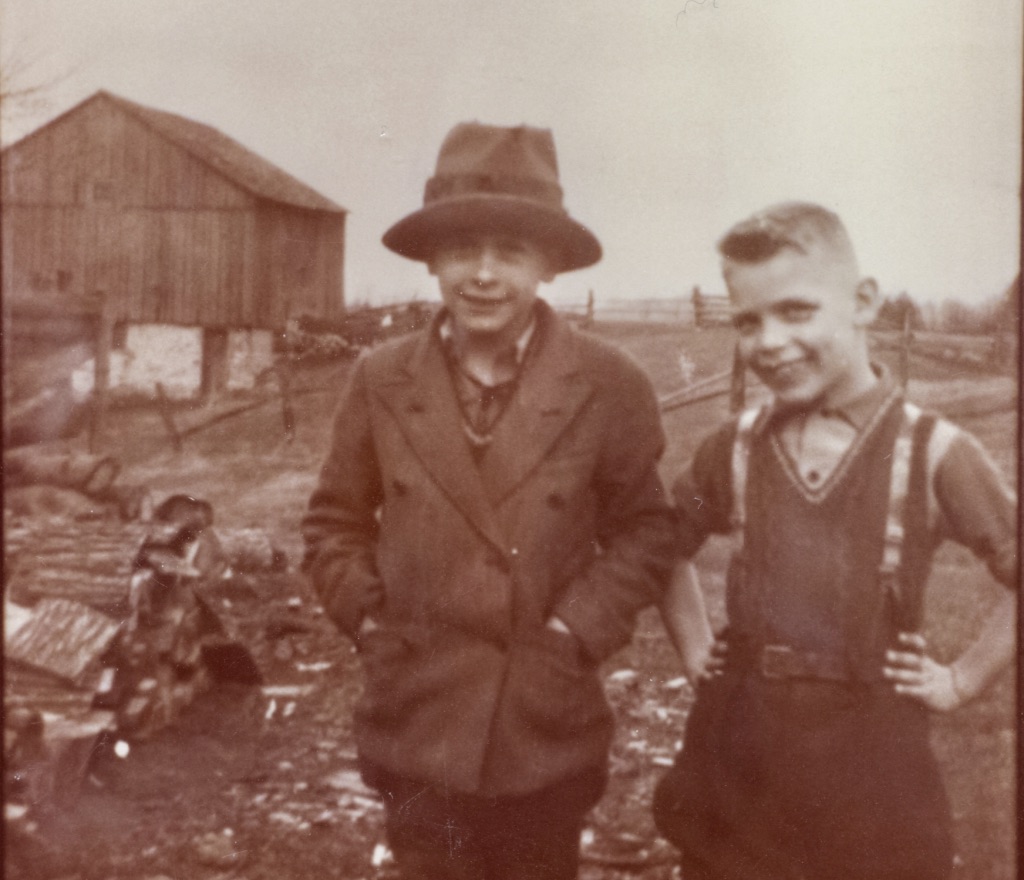
TODAY…YEAR 2020
So here we are in the year 2020…and the 25 acre Freeman farm has survived while thousands of
other family farms have been gobbled up into larger and larger farms with fewer and fewer farmers.
The average size of a farm today is over 500 acres.
We call our farm a farm but is really not a farm. Our income from the farm is
miniscule. So small that we do not pay farm taxes. We pay the much larger
property tax of non farming rural residents. No matter. The farm has survived.

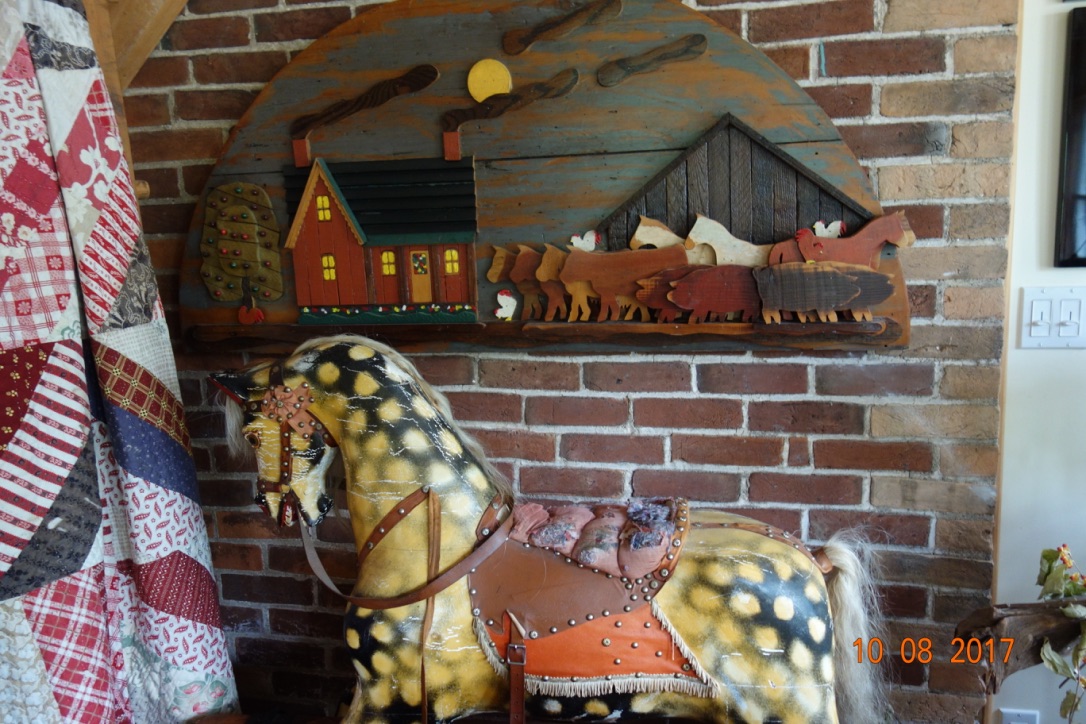
A wooden horse like this would likely have been present in Eywood.
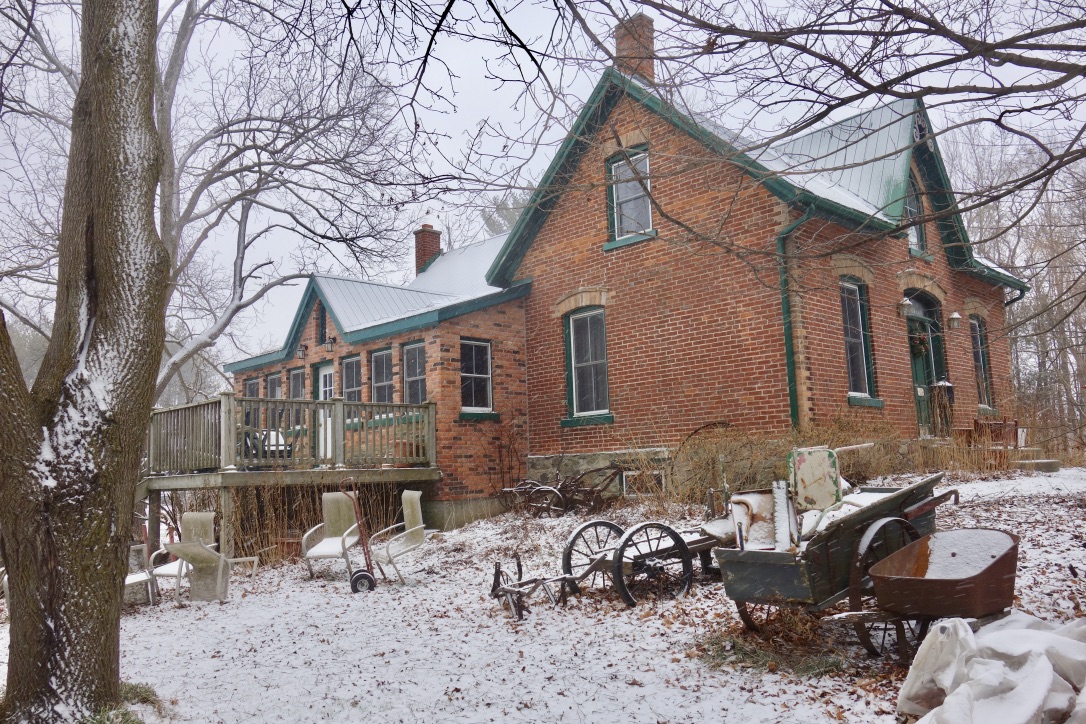

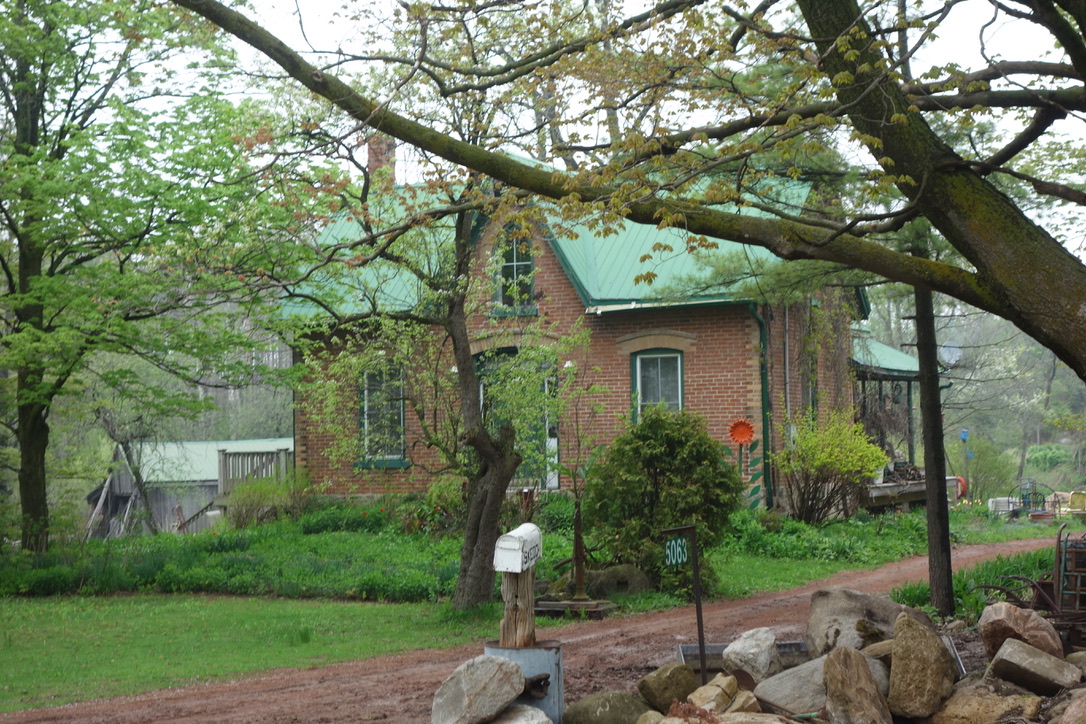

NEXT STORY…PART THREE OF EYWOOD. …AS FOUND IN 1960
alan skeoch
may 2020
EPISODE 55 THE BLACK BEAR THAT GOT TOO FRIENDLY
EPISODE 55 THE BLACK BEAR THAT JUST GOT TOO FRIENDLY: MARATHON 1963
alan skeoch
May 2020
We set up our base camp southeast of the paper mill at Marathon on the north shore of Lake Superior. Five of us doing a
geophysical survey searching for magnetic anomalies that just might be turned into a mine some day. Summer of 1963.
John Lloyd, Roger Nichols, David Murphy, Bill Gilbey and myself. By 1963 I had done this kind of work for several yuears
so our boss, Dr. Norman Paterson gave me the
responsibility for the camp.
And that became a problem.
No sooner did we get the tents up and the food supply in place than we discovered there was a black bear who seemed
to want to join our crew. This began as a novelty for the bear was more interested in stealing our food than gnawing at
our bodies.
This was dangerous business however. One night I got up to take a leak at our latrine only to return and find John Lloyd
standing with axe upraised thinking I was the bear entering our tent. John Lloyd was a Welsh geophyicist with no bear
experience. On another occasion the bear got one of our salamis hanging from a hook in our cook tent. I think the bear
took a mouthful of tent canvas with it. Otherwise the bear just walked…waddled…into the cook tent and made a
selection.
The bear was getting too friendly. Dangerously so. Action had to be taken … desperate action. But first we tried
another ploy. Let’s call it the ‘Garbage Can Lid and Nielsen’s Jesey Milk chlorate bar caper.”
“Hey Al, why don’t we try to shock the bear.”
“How?””
“We could wire up the garbage can lid?”
(We had buried a big galvanized garbage can deep in the ground to act as a refrigerator and also
a protection of our food from red squirrels>)
“Suppose we hook the lid to our motor generator…wait for the bear to lie the lid…and then WHAM…give
him or her a shot of electricity.”
“And the bait?”
“Let’s use the chocolate bars…Jersey Milk. The bear has already got some so we know it likes Jersey Milk Bars.
(So , like a bunch of kids, we set our trap.}
“Drive the truck so it faces the garbage can…start the generator…and then we will wait.”
(All five of us crammed into the company truck..and waited…I don’t remember who held
the on / off switch. Might have been me. Might have been Gilbey as I think the plan was his
idea.)
“Getting dark.”
“Here comes the bear. Get ready.”
“Has the bear got the lid?”
“Yes…NOW! NOW! Throw the switch.”
“Too late … that is one fast bear.”
“He got the whole box of Jersey Milk bars faster that we could throw the switch.”
“Did he or she know we were in the truck?”
“Probably…seemed to consider us food suppliers…as if we were grocery employees.”

We failed. Now for the sad part.
We could not leave the bear free to wander in and out of the tents. Someone could get mauled for sure.
Sp we called in the Lands and Forest Ranger. He came with a long gun. Guns were never allowed in
our bush camps. That principle was established long ago. “If we had guns in camp, we would likely shoot each other,”
Floyd Faulkner told me way back in 1957 when I first got into the business. He was like correct. When people live
in close proximity to each other sometimes tension develop. so …No Guns. That was one of the differences between
Canadian and American bush crews. A good difference.
“We have a bear in camp.” I told the Ranger.
“How often?”
“Every day…scared it might come into a tent at night.”
“Sounds like a Garbage Bear.”
“Garbage Bear?”
“People make garbage too available…bears find steady meals…and problems happen like you face.”
“What can be done?”
“Could a big bear trap be brought in?”
“No! This bear is just too tame….It will be a problem wherever it goes.”
“Does it have to be shot?”
“Yes, we’ll do it now. You say the bear is nearby?”
“Yes, broad daylight it wanders in around us. Never attacks though.”
“We’ll just wait then…Keep behind me.”
“Then the bear appeared…see the photograph.” (PHOTOGRAPH)
“Wait until I get a clear shot…one bullet.”
“There, the bear is smelling the air…got clear shot.”
“BAM!!”
ONE of the saddest things in my life. The poor bear was shot…dying. And it cried like
a baby. We all cried. I do not remember if we buried it…think we did. Then again the Ranger
may have taken it away. We were all very quiet that night. No joy!
Just so I do not end this story on such a sad note, let me tell an anecdote about Bill Gilbey. He was
a Brit sent over to get experience in the wilderness. His family owned the Gilbey’s Gin company in
England. They were part of the minor nobility. His father or grandfather had been nighted for some
achievement in business…probably gin making. Bill was a great guy. Tough, funny, enthusiastic.
He came to camp with a big copy of Eaton’s Catalogue and each night he would
peruse the Women’s underwear section and draw various items to our attention.
“Sad state of affairs, lads,”…”When we have to rely on this catalogue for our pornography.”
And then he would point to some young lady modelling skimpy underclothes.
I felt readers might need this comment so they would stop crying about the bear.
Bush work involved both bears and Mail Order Catalogues.
alan skeoch
May 2020
